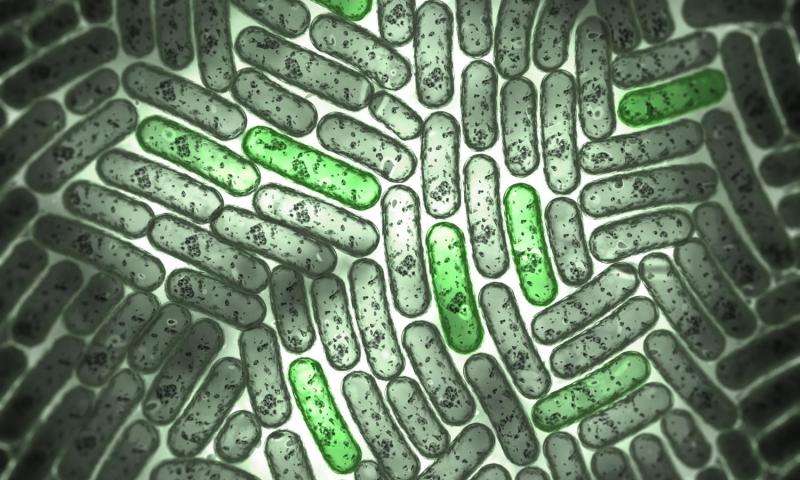
Scientists have come up with a way of creating sensors which could allow machines to smell more accurately than humans
Every odour has its own specific pattern which our noses are able to identify. Using a combination of proteins coupled to transistors, for the first time machines are able to differentiate smells that are mirror images of each other, so called chiral molecules, something that has not been possible before. The human nose can distinguish between some of these molecules and the different forms of the same molecule of carvone, for example, can smell either like spearmint or caraway. Previous machines would not have been able to distinguish between the two.
The development will allow the creation of a new generation of biosensors with an acute ability to sniff out problems. These could have many industrial uses such as telling when food has gone off, and they could even be accurate enough to smell how much pollution is in the atmosphere.
A collaboration of academics from The University of Manchester and the University of Bari in Italy, have created a biosensor that utilises an odorant binding protein. The team’s findings are published today in the journal Nature Communications.
Odorant binding proteins are found in the mucus of the nose, which work olfactory receptors helping us to create our perception of smell. The team have found a method of manufacturing these proteins in quantities that would allow them to be used in biosensors.
They have developed methods to change the way the proteins react so that they can recognise different types of chemicals. Using a type of transistor incorporating these proteins the scientists were able to measure the unique changes in current as the proteins reacted to odours, and record them. This is in effect the machine smelling the odour and then sending the message, which can then be decoded.
The system is incredibly sensitive with a detection limit that approaches that of the human nose.
Read more: How does a machine smell? Better than it did
The Latest on: Biosensors
[google_news title=”” keyword=”Biosensors” num_posts=”10″ blurb_length=”0″ show_thumb=”left”]
via Google News
The Latest on: Biosensors
- Wonder Material 'More Remarkable' Than Graphene Has Medical Potentialon May 7, 2024 at 8:55 am
Borophene is already thinner and more conductive than graphene, and scientists have altered it to make it even more special.
- 'Better than graphene' material development may improve implantable technologyon May 6, 2024 at 7:01 am
Move over, graphene. There's a new, improved two-dimensional material in the lab. Borophene, the atomically thin version of boron first synthesized in 2015, is more conductive, thinner, lighter, ...
- Biosensors Market Size To Touch USD 52.93 Billion, Rising At A CAGR Of 7.9% By 2030: SNS Insideron May 5, 2024 at 6:03 am
( MENAFN - Evertise Digital) - The Biosensors Market , valued at USD 28.80 billion in 2022, is forecasted to reach USD 52.93 billion by 2030, growing at a CAGR of 7.9% from 2023 to 2030.
- Research discovers plants utilize drought stress hormone to block snacking spider miteson May 3, 2024 at 10:16 am
Alexander Jones' research group at SLCU develops in vivo biosensors that are revealing hormone dynamics in plants at unprecedented resolution, including ABACUS2 that quantified cellular ABA in these ...
- Organic electrochemical transistors: Scientists solve chemical mystery at the interface of biology and technologyon April 30, 2024 at 11:22 am
Researchers who want to bridge the divide between biology and technology spend a lot of time thinking about translating between the two different "languages" of those realms.
- Scientists stencil-paint carbon nanotube components for flexible transparent electronicson April 23, 2024 at 9:23 am
Researchers from Skoltech, MIPT, and elsewhere have found a fast and inexpensive way to create geometric patterns in carbon nanotube films. The resulting films turned out to have superior properties ...
- EECE.4410 Introduction to Biosensors (Formerly 16.441/541)on April 8, 2024 at 1:56 pm
This course introduces the theory and design of biosensors and their applications for pathology, pharmacogenetics, public health, food safety civil defense, and environmental monitoring. Optical, ...
- Affinity Biosensors of Santa Barbara receives FDA approval of LifeScale AST testing deviceon April 4, 2024 at 5:45 pm
SANTA BARBARA, Calif. – Affinity Biosensors of Santa Barbara announced Wednesday that the diagnostic company's LifeScale AST system has received clearance from the U.S. Food and Drug Administration.
- Affinity Biosensors Receives FDA Clearance for the LifeScale AST Systemon April 3, 2024 at 4:20 pm
SANTA BARBARA, Calif., April 3, 2024 /PRNewswire/ -- Affinity Biosensors, a leading innovator in the field of healthcare diagnostics, announces that its groundbreaking LifeScale AST system has ...
- Biosensors and Microarrays Informationon February 8, 2018 at 11:53 am
Biosensors, microarrays, biochips and lab-on-chip (LOC) products are microscale devices for biological, biochemical and chemical assays. They consist of microfluidic channels and a biodetector or ...
via Bing News










